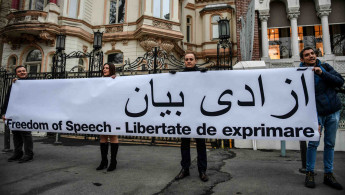Iranian authorities lift Telegram messaging app ban as protests wane
Iran's semi-official ILNA news agency is reporting that the ban on the popular messaging app Telegram has been lifted, two weeks after thousands took part in anti-government protests in which more than 21 people were killed.
The Saturday report says encrypted messaging Telegram, which has some 40 million users in Iran - approximately half the population - is now accessible once again through both Wi-Fi and mobile networks.
The app has become a favourite tool among activists and dissidents in recent years, as it provides end-to-end encryption of messages and telephone calls, providing a communication platform away from the prying eyes of government security services.
The Associated Press spoke on Saturday with residents from several cities across the country, including Shiraz, Isfahan, Bandar Abbas, Rasht and Oroumieh, who all confirmed that they now have access to the app.
Iran shut down Telegram and the picture-sharing app Instagram on New Years Eve, as protests gathered momentum. Authorities said rioters were using them to spread unrest. Soon afterward authorities restored access to Instagram but Telegram remained banned.
Twitter Post
|
During the protests, Telegram founder Pavel Durov, tweeted his refusal to shut down a channel being used by protestors, and condemned the Iranian government for suspending the app.
YouTube, Facebook, Twitter and the BBC Persian service are all banned in Iran, which maintains one of the strictest online censorship policies in the world.
The Iranian authorities launched a ruthless crackdown on anti-government demonstators, who initially took to the streets peacefully to protest against economic conditions. It has been estimated that 3,700 anti-regime protestors were arrested, equal to nearly ten percent of the 42,000 who took to the streets, if approximations are correct.





 Follow the Middle East's top stories in English at The New Arab on Google News
Follow the Middle East's top stories in English at The New Arab on Google News


